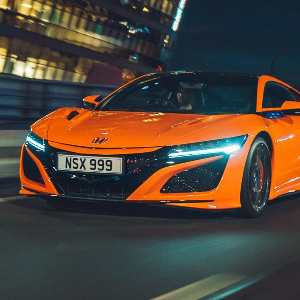
Skoda's supermini isn't so mini anymore, but is it still super? Andrew English found out.
Small, as EF Schumacher wrote in his influential eponymous 1973 book, is beautiful, except it isn’t always. Škoda, the 126-year-old Czech car maker owned by Volkswagen since 1991 (actually it took another nine years for VW to fully buy out the company) doesn’t make its Citigo small car anymore and the fourth generation of the Fabia supermini, just got a lot bigger.
Big is better at Škoda, then. But why is that?
It’s a convoluted story, but basically VW and a number of other car makers claim that a combination of EU crash safety and emissions requirements make it impossible to make even marginal profits on tiny A-class cars such as the 3,597mm long Škoda Citigo city car.
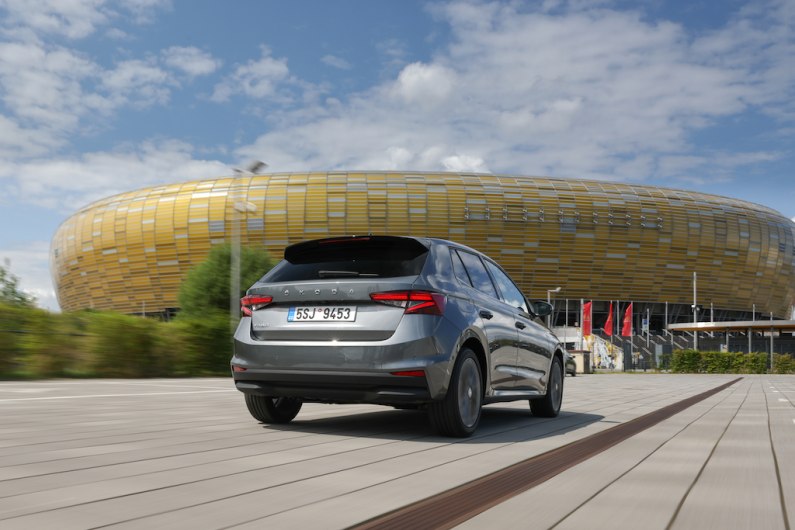
For the future, Škoda will be the VW Group development lead for the new range of battery-electric tiddlers, which will replace the VW Up! and its Seat Mi and Škoda Citigo replacements, which are slated for 2025 and in VW form will be called ID1 and ID2.
In the meantime, this new gen-four Fabia serves as Škoda’s smallest and cheapest car. Yet it’s not that small; for the first time Fabia measures over four metres long – 4,108mm. This is a B-class segment supermini presented as a C-class family hatchback. It’s a strategy pursued by rivals such as Ford’s Puma SUV and Hyundai’s i10 (Hyundai even coined a phrase for the car at the launch: “the A to B car”).
Is this a good idea or does such a strategy mean a company loses sales at the bottom end from customers who genuinely want a small car and at the top end by cannibalising sales of its ‘proper’ C-class car, which in Škoda’s case is the Octavia.
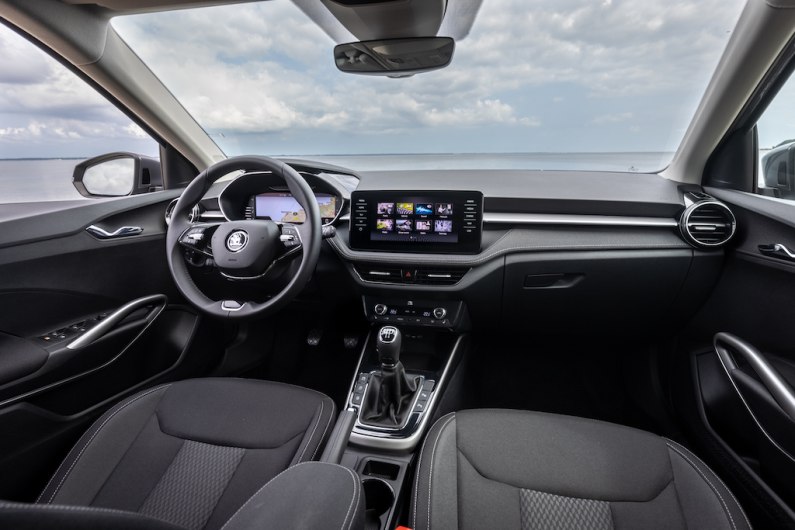
So new Fabia is based on the VW Group MBQ A0 architecture which underpins Audi’s A1, Seat’s Ibiza and VW’s Polo. The Fabia’s wheelbase is 2,564mm, which is 94mm larger than its predecessor and larger than that of the original 1996 Octavia, which itself was based on the Golf. In length the new Fabia is 111mm longer than its predecessor and at 1,780mm it’s 48mm wider.
The boot has expanded by 50 litres to 380 litres and there’s now 100 litres of storage space in the cabin.
Far from bloated in appearance the new body looks a great deal more handsome than the outgoing model, particularly around the front with an almost Peugeot look. It’s slippery through the air, with an aerodynamic coefficient of drag of 0.28 thanks to a complete undertray, active radiator grille vents, plastic in-fillers on the alloy wheels, a roof spoiler and smaller door mirrors.
The cabin feels a step up in quality, too. With new materials, fabrics and at the top end of the brochure, contrasting highlighting themes running through the facia. If not of Audi quality, the plastics are easy to clean and not too scratchy to the touch. Some of it is a bit over designed though, and the inserts round the instrument binnacle were gathering cloth lint and dust even on the press cars.
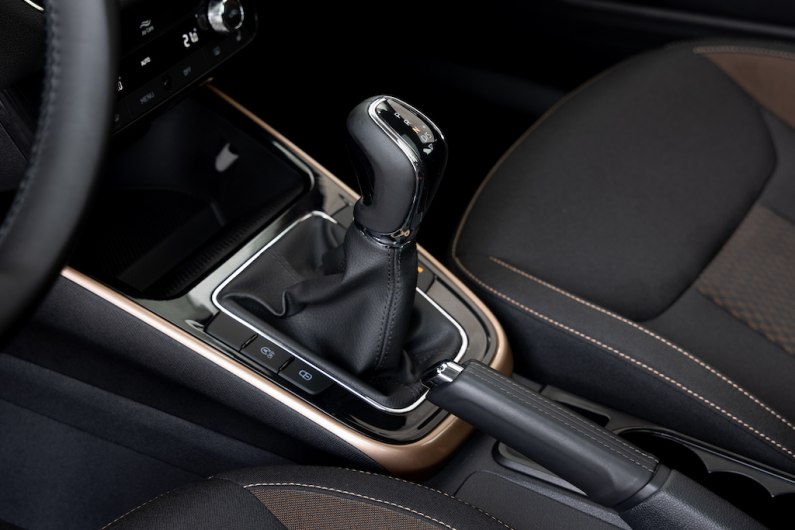
You can see the strong influence of VW Group central purchasing with appearance of the central touch screen and Golf 8 software. These touch screens and their software are getting a reputation for unreliability and glitches, and while not all the criticism is warranted, it’s still dragging Škoda and Seat down with it.
Thomas Schäfer, Škoda’s chief executive admitted that while the situation is slowly being sorted, the basic design of software, in which things like heater controls are split across a set of touch screen sub menus and separate buttons, isn’t in keeping with Škoda’s ‘Simply Clever’ ethos. He confirmed that future touch-screen design for the Czech side of things would be different and much improved.
Equipment levels on the upper model range equate to a quality C-segment car, including options for heated seats, heated steering wheel and windscreen, and a large sunroof along with a variety of centre touch screens and a digital dashboard/instrument binnacle. On the lower spec models, it’s back to a tiny 3.2in centre screen and analogue instruments.
Safety starts with a stiffer chassis than the predecessor, with up to nine airbags and all the modern camera- and radar-based safety systems including smart cruise control, lane-keeping assistance (thankfully simple to turn off), parking sensors and blind-spot monitors.
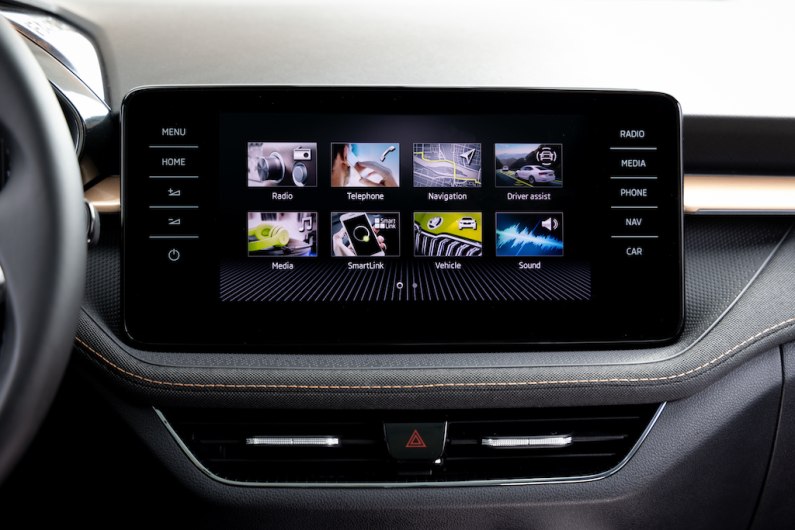
‘Simply Clever’ additions include separate compartments in the boot, mobile phone pockets in the back of the front seats, detachable cup holders, a USB socket in the rear-view mirror and a foldable boot-mat bumper protector. It doesn’t amount to much on paper, but some of it can be quite useful.
Step in and the front seats are accommodating and comfy, with plenty of storage around the front seats and lots of adjustment on the seat and steering column for most sizes of driver. The back seats aren’t quite as large as Škoda’s brochure would have you believe, however. I’m exactly six foot and sitting behind myself, my knees touched the front seat back, although there was enough head room. Fold the rear seat backs on to their bases and you get a not-quite flat load area of 1,190 litres.
All the drive trains are built in the Czech Republic and mostly comprise, a one-litre three-cylinder in turbo and non turbo forms. The two non-turbo MPI units deliver 64bhp/69lb ft and 79bhp/69lb ft, with five speed transmissions. There weren’t any to drive at the launch, but given our comments below, these should be regarded as low-insurance specials, most suitable for hire fleets and young drivers.
More realistic are the turbo TSI triples, which are sparkier, with 94bhp/129lb ft and 108bhp/148lb ft, giving respective maximum speeds of 121 and 127mph and 0-62mph accelerations of 10.6sec and 9.7sec, Combined fuel consumptions of 56.5mpg and 57.7mpg and CO2 emissions of between 113 and 127g/km. These models will make up the majority of UK sales.
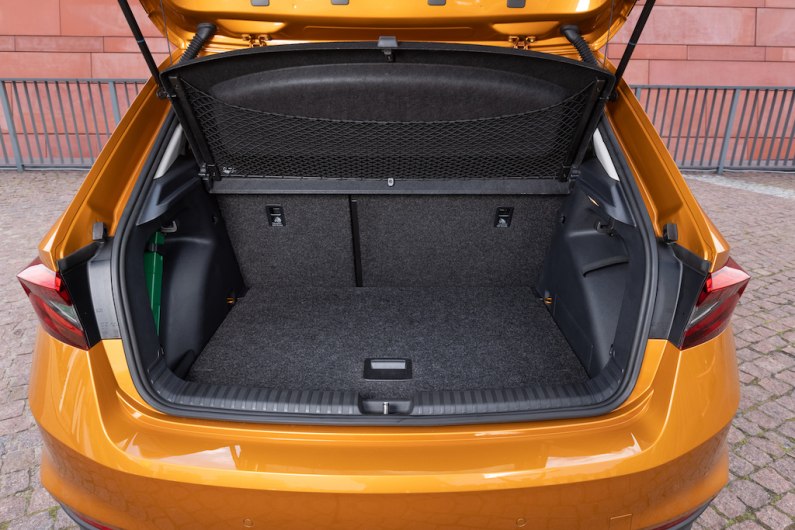
There won’t be any vRS hot hatch versions even though there’s a keen following for these belters in the UK and Germany, nor will there be a turbo diesel in the range, which is an indication of how far oil burners have fallen in the public’s mind.
To come will be a 1.5-litre four-cylinder turbo delivering 148bhp/184lb ft with a seven-speed twin-clutch DSG transmission, which has a top speed of 140mph, does 0-62mph in 8sec, with a Combined economy of 50.5mpg and CO2 emissions of between 128 and 142g/km. This could be the pick of the range, but possibly expensive.
First deliveries in the UK will be in December so there are no prices yet, but the range is expected to start at just under £15,000, with the TSI one-litre models in base spec costing around £16,500.
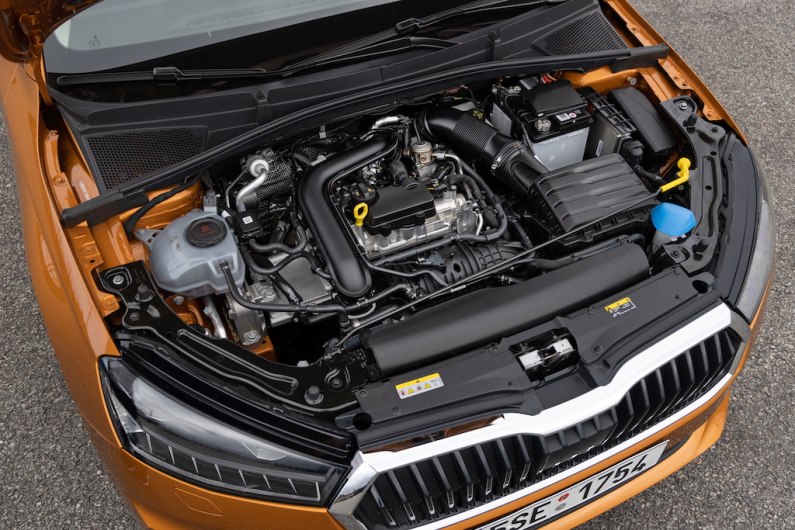
Of the two TSIs, we prefer the more powerful, 108bhp version but only just. The 94bhp model is by no means a disaster and the five-speed gearbox flatters the meagre power output and is much the better ‘box.
In the end, though the 108bhp model is the one to have and even then, you are rowing it along on the six-speed gear lever at times. There’s not a lot of anything below 2,000rpm and you need to rev the engine to get going. It pulls well up to around 4,500rpm though there’s not much point in holding on to the 6,000rpm red line. It’s generally refined and only betrays its warbling nature under a hard throttle.
Driving around the urban roads in Gdansk in Poland, I saw a fuel consumption of 43mpg, which isn’t bad for these three pot turbo engines, which are never quite as economical in use as their on-paper claims.
Suspension is the class ubiquity of MacPherson-struts at the front with a twist beam at the rear. Mindful of Škoda’s reputation for fine ride, it’s no surprise to find the suspension settings are soft, but are they too soft? Dynamically, you can see the work that’s gone in, the body control is precise, the front-to-rear pitch and squat under braking and acceleration is well controlled, but my this car rolls through the turns.
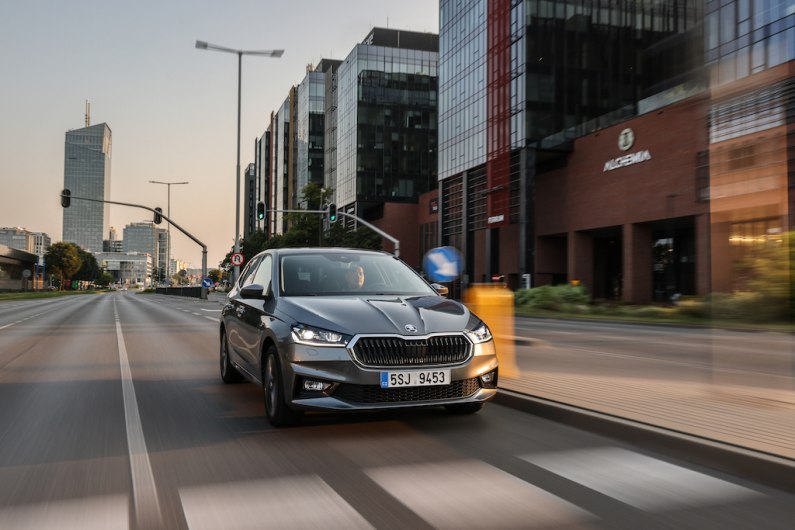
Enough it should be said, to wonder about the wisdom of specifying the very pleasant but heavy sunroof which will only encourage the ship-in-gale cornering attitude.
All this does mean a fine ride quality with a gently flowing attitude as it rolls over bumps and potholes, but if you drive hard, it gets quickly found out. There’s a lot of body movement over long undulations and it floats slightly over crests irrespective of which tyre and wheel combination you specify.
For all that the steering felt well engineered, precise and with a nice off-the-centre feel. It’s also light enough for those, erm, older members of the public to park with ease. The brakes are nicely weighted and strong, with a good grab at the top of their travel.
On first acquaintance new Fabia is a reasonably priced, small family hatchback which will suit a great many folks who want comfy, practical transport on a budget which isn’t a sport utility. It is a big car, but to be fair, pretty much all the competition is over four metres long.
It’s also hard not to like a car which prioritises your comfort over handling, but that occasionally queasy body roll will put off quite a few. And what a shame about that vRS…
